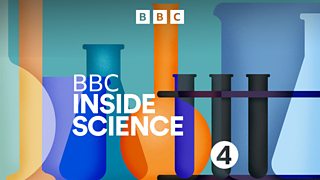Stonehenge & Durrington Walls - Worms, Bonemeal & Green Rust
Quentin Cooper finds out how prehistoric cattle teeth may provide vital clues to unlocking the enduring mystery of what went on at Stonehenge.
Stonehenge & Durrington Walls
Stonehenge's massive stone pillars have long been a tourist magnet, attracting nearly a million people a year.
Now new archaeological evidence shows that the iconic monument was a place of pilgrimage even in prehistoric times.
Cattle teeth found at Durrington Walls, a massive circular earthwork near to Stonehenge, suggest that the animals were herded from distant parts of Britain.
The results add to increasing evidence that people may have visited Stonehenge periodically.
But what drew them to the site? It is a controversial subject - did they congregate during episodes of feasting at the summer and winter solstices or permanently live at the sites?
Quentin Cooper is joined by Jane Evans of the Natural Environment Research Council’s Isotope Geosciences Laboratory in Nottingham and Michael Parker Pearson, Professor of Archaeology at the University of Sheffield. Are the iconic monuments at Durrington Walls and Stonehenge related? And could the two sites be part of a single ‘ritual landscape’?
Worms, Bonemeal & Green Rust
What do earthworms, green rust and bonemeal have in common? The answer is that they are all pointing the way to new techniques for cleaning up contaminated land. And the scientists concerned are finding out how they might do so using x-rays from the brightest light in Britain, the new Diamond Light Source at the Rutherford Appleton Lab near Oxford.
Quentin Cooper hears from Dr Mark Hodson of the University of Reading how some earthworms are developing resistance to the metals that contaminate soil and might help to release them so that plants can absorb them and be removed – or even used to recover the metals.
Dr Paul Schofield of London’s Natural History Museum is using bonemeal to try to lock pollutants up in safe, insoluble phosphates.
And Dr Sam Shaw of the University of Leeds is looking at the potential of what he calls green rust to form a sort of filter around waste sites that will absorb metals if they try to cross it.
Last on
More episodes
Broadcast
- Thu 16 Oct 2008 16:3091�ȱ� Radio 4
Featured in...
![]()
Solstice
Salute the sun with these solar sonic treats.



